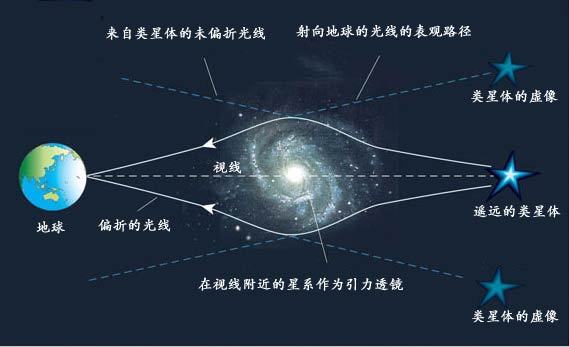博文
限制天体物理暂现源前身星的新方法
|
【摘要:近几年射电巡天发现了一些快速射电暴的新现象。由于还没有观测到光学波段的对应体,这些暂现源的前身星是什么还不清楚。根据快速射电暴很可能发生在宇宙学距离上和具有非常高的发生率的事实,北京大学的两位学者提出用引力透镜观测来限制快速射电暴的前身星的新方法。】

In recent years a number of Fast Radio Bursts (FRBs) have been found in radio surveys. Those FRBs are very bright (around 1 Jansky at 1.4GHz) and have very short durations (milliseconds or sub-milliseconds), and no repeat of bursts has been found. Due to the nature of short durations and the low spatial resolution of radio telescopes, no optical counterpart to FRBs has been found yet so no redshift and distance have been determined. Hence, the progenitors of FRBs are still a mystery.
However, the dispersion measure (DM) of FRBs indicates that they occur at cosmological distances. The occurence rate is estimated to be very high, about 1000 per day on the whole sky. The large distance and high event rate indicate that gravitational lensing of FRBs should be observable. The graduate student LI Chun-Yu of the School of Physics and his thesis supervisor Prof. LI Li-Xin of the Kavli Institute of Astronomy and Astrophysics (KIAA) in Peking University, Beijing, have proposed to use gravitational lensing to constrain the progenitor of FRBs. Their work, entitled "Constraining fast radio burst progenitors with gravitational lensing", will be published in SCIENCE CHINA Physics, Mechanics & Astronomy, 2014, Vol 57(7).
Although the progenitors of FRBs are unknown, a number of models have been proposed by astrophysicists, including delayed collapse of supra-massive neutron stars to black holes, special magnetar radio flares, merger of double neutron stars, merger of white dwarfs, flaring stars, and even a small fraction of FRBs have been demonstrated to be associated with gamma-ray bursts. Different type of models involve different evolution timescale of stars, and hence lead to different cosmic redshift distribution of FRB progenitors and different redshift distribution of FRBs. Different redshift distribution of FRBs then lead to different size of FRB samples needed for detection of a FRB lensing event. Therefore, the actual sample size of FRBs determined from observations for detection of a FRB lensing event (or equivalently, the observed number of lensing events in a given FRB sample), at least in principle, can be used to constrain the model for the progenitor of FRBs.
Even without detection of optical counterpart of FRBs, it is possible to determine the lensing event with radio observation alone because of the transient nature of FRBs. When two FRBs occur in the same region on the sky within the measurement error with a certain delay in arriving time, they are likely to be the two gravitational lensing images of the same FRB, if (1) their light curves have identical shapes and durations; and (2) their spectra have the same shape. If a radio telescope has several frequency channels, the ratio between fluxes in any two channels can be used to judge if the radio spectra of the two FRB images have the same shape. Besides, A similar dispersion measure may be another criteria for justification of a lensing case.
The gravitational lensing effect is a prediction of Einstein’s general relativity and has been used as a powerful tool for probing the matter contents and the structure of the Universe. Now LI & LI have proposed a new usage of gravitational lensing: to constrain the progenitor model for some transient events in astronomy. The lensing phenomena of quasars have been discovered for several decades but of transient events have not been discovered yet. LI & LI believe that with future systematic radio surveys for FRBs it will be possible to detect lensing events of FRBs and constrain their progenitors.
See the article: Li C Y, Li L X. Constraining fast radio burst progenitors with gravitational lensing. SCI CHINA Phys Mech Astron, 2014, 57(7): 1390-1394. doi: 10.1007/s11433-014-5465-6

https://blog.sciencenet.cn/blog-306503-800975.html
上一篇:如何提高非接触光学方法测量壁面摩阻的精度?
下一篇:构建量子信息网络的基石——多组份纠缠态光场